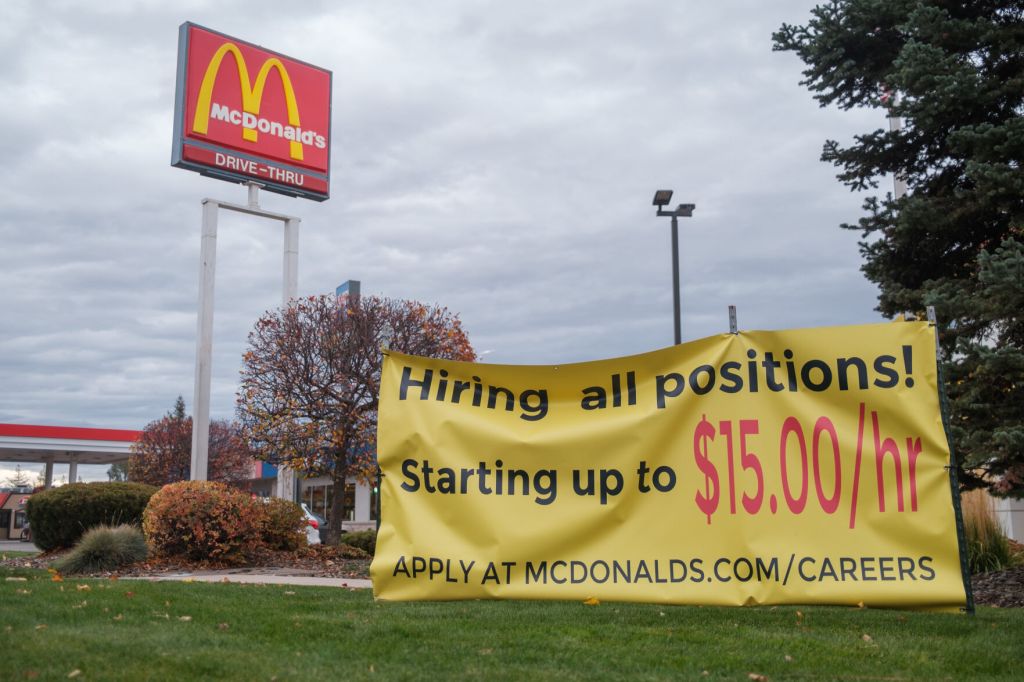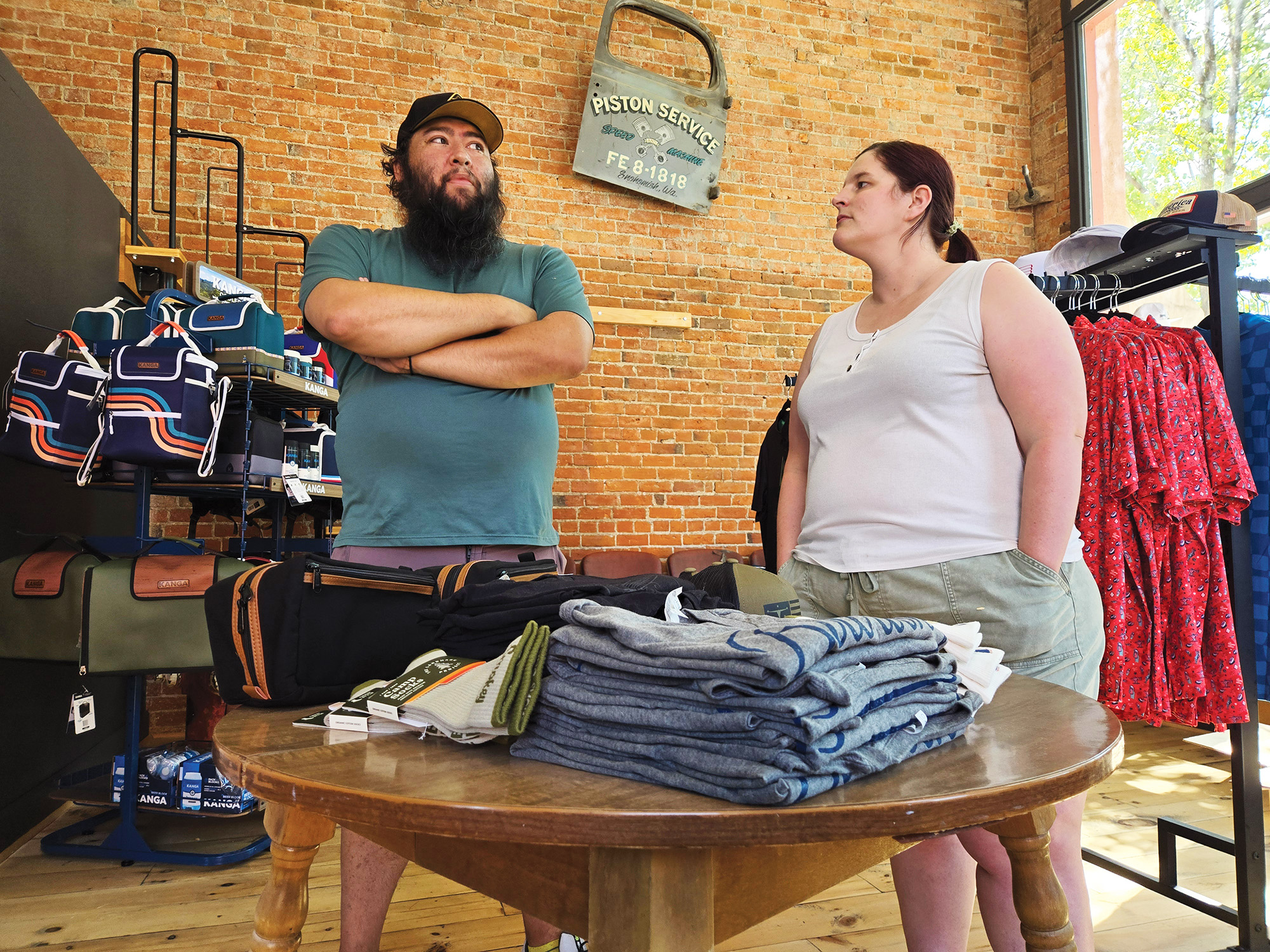Oregon jobless aid payments fell by 90% last year, yet worker shortage persists
Published 7:00 pm Sunday, February 13, 2022

- A banner outside the McDonald’s restaurant on Island Avenue advertises hiring of up to $15 an hour on Friday, Oct. 29, 2021. State economists say Oregon won’t have recovered all the jobs it lost to the pandemic recession until next fall.
SALEM — Oregon began 2021 paying out nearly $600 million each month in unemployment assistance, providing aid to well over 200,000 people.
Trending
Monthly payments fell rapidly through the year, though, as the economy rebounded from the pandemic recession. Aid then plunged off a cliff in September when expanded federal benefits expired.
In December, the state paid just over $60 million in benefits — only 10% of what it paid at the start of 2021, and only a little higher than benefits payments in the months before the pandemic.
In addition to the end of federal pandemic assistance, last year’s record decline in unemployment aid reflects one of the strongest labor markets in Oregon history. The number of vacant jobs exceeds the number of unemployed workers.
Trending
The state added 107,000 jobs in 2021. That’s far above the prior one-year record, which was 61,000.
And yet Oregon employers are still hunting for workers, and state economists say Oregon won’t have recovered all the jobs it lost to the pandemic recession until next fall.
Expanded jobless assistance in 2020 and 2021 is one reason why, according to Gail Krumenauer, economist with the Oregon Employment Department. Federal pandemic aid paid as much as $600 extra a week in jobless benefits in 2020, which meant that laid-off workers at the bottom of the pay scale were actually earning more than they did when they were working.
“They were getting, on average, full wage replacement,” Krumenauer said.
Meanwhile, just about everyone received three rounds of stimulus payments during the pandemic, part of a broad federal aid package that spared many people from the pain of the steepest, deepest economic downturn in U.S. history.
“That did build up people’s savings,” Krumenauer said.
As a result, she said, some people have a financial buffer that’s letting them take their time returning to work and be choosy about which jobs they’ll take.
The worker shortage has pushed up wages as employers compete for labor and seek to lure workers back. The average private-sector job paid $31.76 an hour in December, according to state data, up 15% since the pandemic started.
People who might have worked two jobs to make ends meet before the pandemic can now get by with one, Krumenauer said, which only makes the labor market tighter.
“That’s a great condition for workers to be in,” she said. “And it’s more difficult for employers.”
There are many other reasons Oregon employment hasn’t returned to pre-pandemic levels. Child care remains in especially short supply, for example, and some prospective workers continue to choose to stay home because of COVID-19.
It’s not likely that Oregon’s job growth in 2022 will match last year’s torrid pace. And with so few workers left on the unemployment rolls, Krumenauer said it’s getting harder to match individual people to the skills required for the jobs available.
Still, she said that as the omicron spike in coronavirus cases fades and Oregonians draw down their savings from pandemic stimulus payments, more workers will likely be drawn back into the labor pool.
“It seems like if COVID can finally get under control after this and some of that cushion goes away,” Krumenauer said, “then more people will start getting back to work.”









